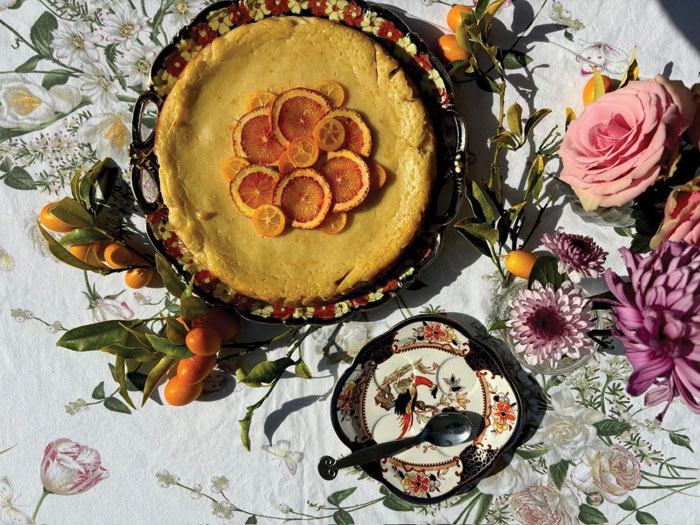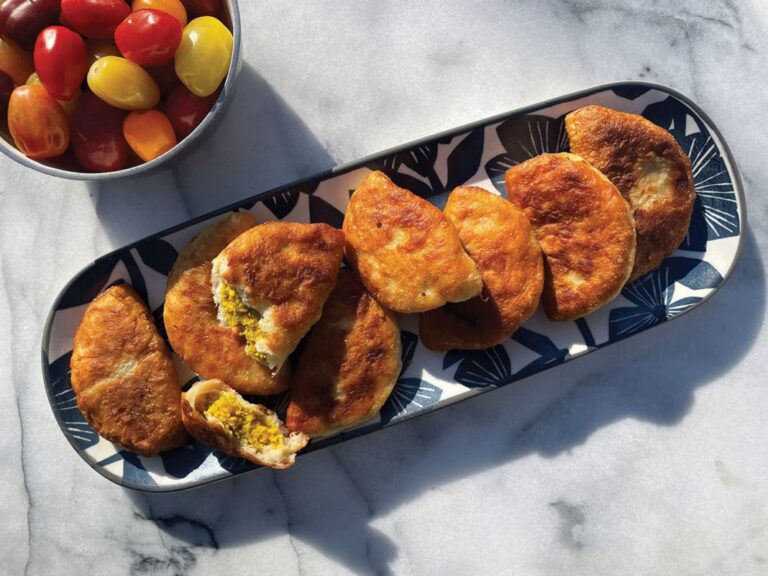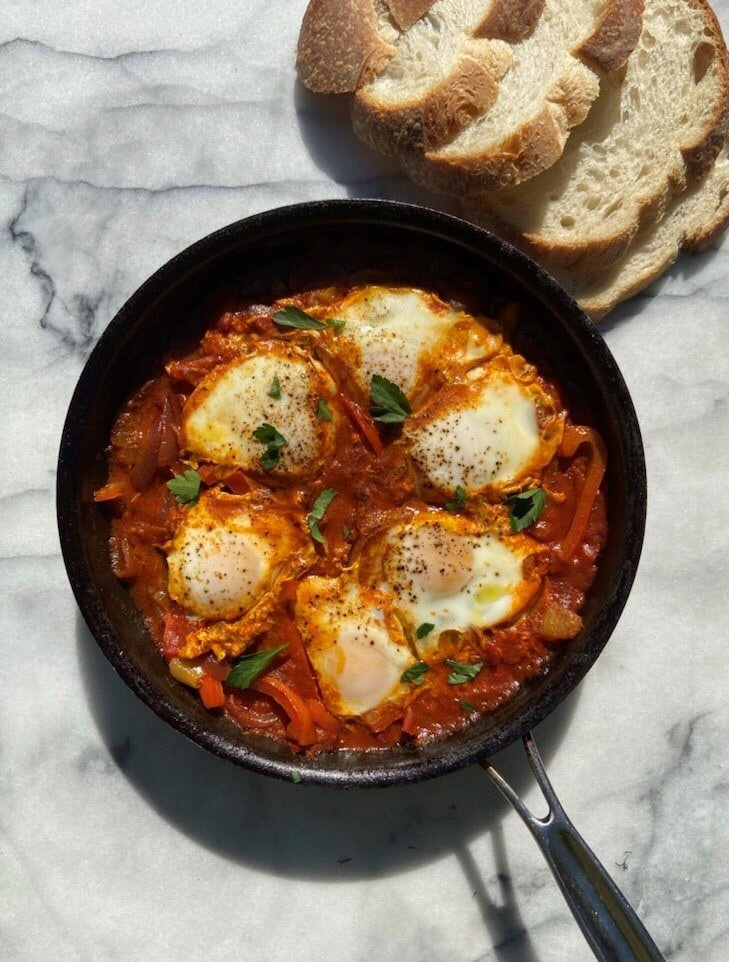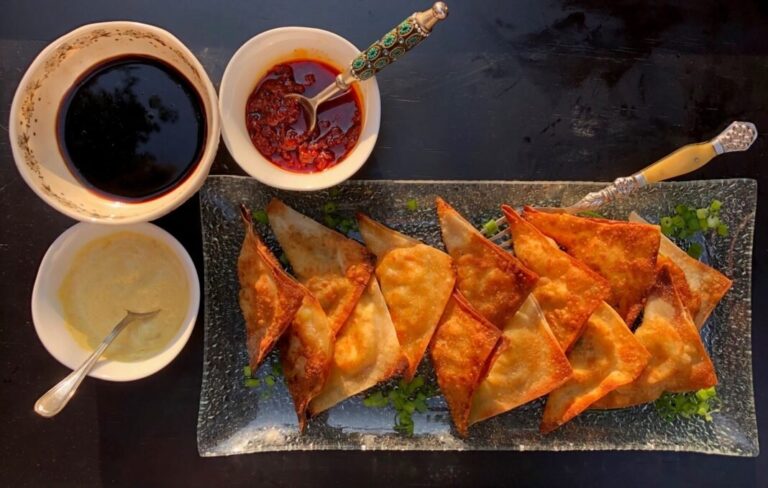Creamy Cassola—A Sephardic Cheesecake for Shavuot
This delicious recipe, called Cassola in Italian, has many variations.

About ten years ago, my husband Neil, my daughter Rebekah and I enjoyed a very beautiful vacation in Italy where we visited Rome, Florence and Venice. On our trip, we ate many incredible meals in the kosher restaurants that line the shiny black cobblestone streets of the old Ghetto in Rome. Perhaps my favorite, most memorable moment was discovering the magical baked goods in Pasticceria Boccione a 200-year-old bakery where they still bake in the original oven.
The Jewish community of Rome is the oldest community in the world outside of the Middle East, with a continuous presence from classical times until today. In 1555, Pope Paul IV decreed that all Jews reside within the walls and locked gates of the Roman Ghetto, which was situated in the Sant’Angelo district. Although most Roman Jews already lived in this neighborhood, this undesirable area was chosen because it was subject to flooding from the nearby Tiber River. The Jews were deprived of property rights (even within the Ghetto), denied work in certain professions and were subject to Catholic sermons on the Sabbath.
The legacy of the Ghetto is a unique dialect called Giudeo-romanescu, which preserves 16th-century Italian dialect and includes many romanized Hebrew words. The Ghetto is also considered one of Rome’s most charming and eclectic neighborhoods, with its old limestone buildings and the architecturally eclectic, art nouveau structure of the Great Synagogue of Rome, which was completed in 1904 (replacing Cinque Scole, the five ancient synagogues of the Ghetto).
When I entered that bakery, I noticed many of the pastries looked very humble. I was shocked to notice that some were even burnt. But the bakery’s blackened crostata have a serious history. Those crispy blackened tops have an important purpose because another Papal decree of the 16th century forbade Roman Jews from selling dairy products. So creative Jewish bakers hid a ricotta and cherry filling inside the blackened crust. I was truly enamored of the pizza ebraica, a large flat cookie studded with dried fruit and nuts, which was definitely the best bite I had in Rome.
Then there’s the Sicilian connection. After the destruction of Jerusalem in 63 BCE, a large number of Jews arrived on the island of Sicily. By the time that the Crown of Aragon took reign over the island in 1412, Sicilian Jews constituted 8% of the vibrant mixed population. They were well integrated into the population and found occupation as philosophers, doctors, builders and farmers.
In 1493, the Spanish Inquisition ordered the expulsion of the 36,000 Jews residing in Palermo, Messina and other cities. Around 2,000 Sicilian Jews fled to Rome, where they settled in the Ghetto.
They brought with them the recipe for a ricotta cheesecake.
In 1493, the Spanish Inquisition ordered the expulsion of the 36,000 Jews residing in Palermo, Messina and other cities. The majority fled to the friendlier lands of the Ottoman Empire, especially Greece, Cyprus and Turkey, where they were welcomed. But around 2,000 Sicilian Jews fled to Rome, where they settled in the Ghetto.
They brought with them the recipe for a ricotta cheesecake. This delicious recipe, called Cassola in Italian, has many variations. Some cheesecakes include cinnamon or chocolate, others are citrusy flavored with lots of lemon zest and fresh lemon juice. The one I tasted in the Roman Ghetto featured raisins soaked in rum. It was incredibly light and fluffy and creamy, reminiscent of a custardy flan. I just love the hint of rum and the sweet surprise of the raisins. This might be your chance to try this traditional Italian Jewish cheesecake for Shavuot. (It must be a good recipe because many Catholic Romans bake it for Christmas!)
Buon Appetito!
—Rachel
Cassola Ricotta Cheesecake
3 cups whole milk ricotta (drained in a cheesecloth or fine sieve for 1 hour)
¾ cup sugar
3 large eggs
1 Tbsp cornstarch
2 Tbsp vanilla
2 Tbsp orange liqueur or rum
1/3 cup golden raisins
1 pinch of salt
In a small bowl, combine the raisins and liquor and allow to soak for 1 hour.
Preheat oven to 350°F degrees.
Lightly grease a springform pan and line the bottom and sides with parchment paper.
In the bowl of a stand mixer, add eggs and sugar, beat on medium speed until mixture is pale yellow.
Add the ricotta, cornstarch, vanilla and salt. Continue beating for an additional 3 minutes until fluffy.
Add the raisins and liqueur and use a spatula to gently combine.
Pour into prepared pan and bake for 60 minutes or until the center barely jiggles.
Allow to cool on a wire rack for one hour, then place in the refrigerator for two hours, or overnight.
Decorate with orange slices or any other fruit. Sprinkle powdered sugar on top.
Serve with fruit and whipped cream.
Sharon Gomperts and Rachel Emquies Sheff have been friends since high school. The Sephardic Spice Girls project has grown from their collaboration on events for the Sephardic Educational Center in Jerusalem. Follow them
on Instagram @sephardicspicegirls and on Facebook at Sephardic Spice SEC Food






